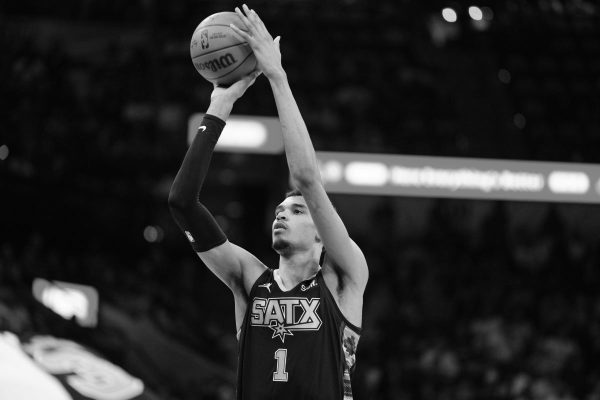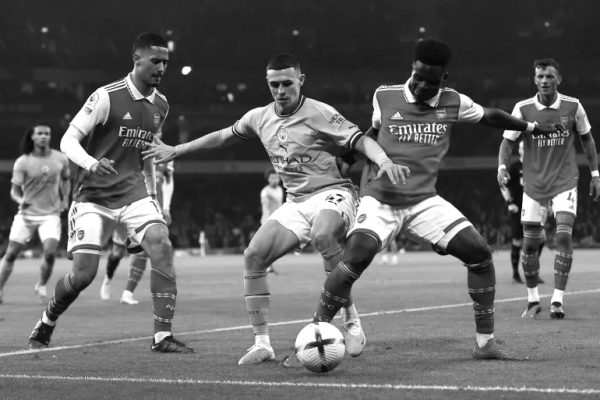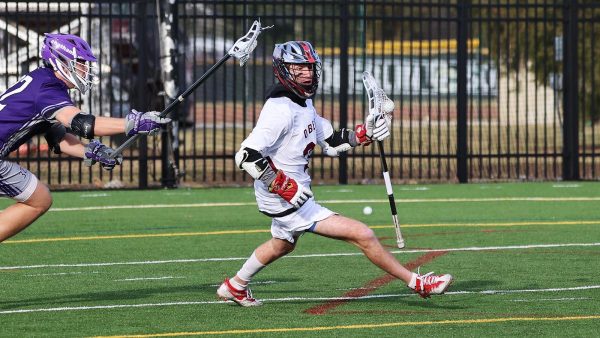MLB Offseason Spending Highlights Change in Values
The Boston Red Sox signed outfielder J.D. Martinez to a five-year $110 million mega-deal Monday. On the surface, the deal will help them contend with their American League East rival New York Yankees this season, after they made headlines by acquiring National League MVP Giancarlo Stanton of the Miami Marlins. However, with the contract finalization so close to the start of the season — spring training starts today — it highlights an alarming trend of MLB teams choosing not to sign blue-chip free agents, opting instead to pocket extra cash. With four of the top 10 free agents of this offseason still unsigned, MLB teams appear to have adopted the strategy of tanking.
Thirty-year-old Martinez comes off a career year in which he hit .304, 45 home runs, and 104 RBIs. In a normal offseason, teams would be lining up to sign him, but this winter has been historically slow. A January report by FiveThirtyEight.com showed that by day 82 of the MLB offseason between 2006 and 2016, 76 percent of the top forty players had been signed. This offseason, only 43 percent were signed by day 82. Today, only 73 percent have been signed, and among those still unsigned is former NL Cy Young winning pitcher Jake Arrieta. While the lagging market may just be a statistical anomaly, there are several signs pointing to this being the start of a worrisome trend.
Baseball was the first sport to fully implement advanced statistics in all aspects of the game. From building teams to constructing stadiums, there is no decision made by an MLB team without first looking at analytics. From batting average to OPS, ERA, WHIP, and more nuanced statistics, such as how batters spread the ball across the field or how fielders should shift according to who is at bat — to name a few — it only makes sense that the league married to stats would begin applying it to managing salaries.
The MLB is the only league out of the four major sports to not have a salary cap. While some skeptics think this gives big market teams an advantage, it really lets MLB teams give their own values to players and at their own risk. Without a salary cap, it’s easy to assume that the biggest problem facing baseball would be inflated salaries to mediocre players, but this offseason, players are facing the exact opposite. Just as baseball has no salary cap, it also has no salary floor. The most telling statistic in baseball is WAR, or wins above replacement. WAR measures how many more wins a team gets by playing a specific player instead of an average player at their position. In other words, it indicates how many more wins a specific player earns his team than his contemporaries at the same position would. Bottom and middle-tier teams with little hope of making the playoffs in the near future are beginning to realize that paying hundreds of millions of dollars for players that will only add a few wins to their teams will not make a difference. Instead, they are balking on top-tier players and pocketing extra money for future years.
The Houston Astros — who just won their first World Series in franchise history in October — were the first team to pick up on this strategy. Just four years ago, they had a combined payroll of $22 million. For reference, the average payroll in 2017 was $137 million. In 2018, the highest payroll will be the Los Angeles Dodgers, who will dish out nearly $250 million, including over $35 million to their ace pitcher Clayton Kershaw. This shameless tanking by the Astros actually made them the second most profitable team in the MLB and led to draft picks and huge signings that made them the World Series champions. This style of management was introduced to American sports by Sam Hinkie, the infamous former general manager of the Philadelphia 76ers, whose salary cap manipulation and shrewd trades led his team to some of the worst records in NBA history, as well as five top-five draft picks in the last five drafts. While Hinkie brought tanking to a new extreme and will likely never have a job in the NBA again, it looks like the recent success of teams such as his and the Astros have inspired plenty of imitators.
Derek Jeter, the sure-fire Hall of Fame shortstop for the New York Yankees from 1995–2014, was part of a group that purchased the Miami Marlins in 2017 and has taken on the role of CEO. While the Atlanta Braves, Chicago White Sox, Cincinnati Reds, Detroit Tigers, Kansas City Royals, Oakland Athletics, Philadelphia Phillies, Pittsburgh Pirates, and Tampa Bay Rays have all made clear that they will be competing for the top overall pick this season through a winter full of questionable trades and non-signings, no team has gone further to reduce their team to ashes than the Marlins. One of Jeter’s first moves as CEO was to ship his franchise’s best player and NL MVP Stanton to his old team, but even more questionable was the return he got for it: two mediocre prospects and a decent second baseman in Starlin Castro. In addition to trading Stanton, he also dealt the franchise’s two other stars, Dee Gordon and Christain Yellich, to complete the winter salary dump. With such blatant tanking, both the MLB Players Association and agents are starting to get worried.
Earlier this month, Tony Clark, executive director of the MLBPA, didn’t mince words while addressing the slow-moving offseason. “It’s a race to the bottom,” he said, per USA Today. “[It’s] a fundamental breach of the trust between a team and its fans and it threatens the very integrity of our game.” While it’s tough to feel bad for players arguing the decimal points in deals that are worth tens of millions of dollars, the prospect of tanking is a serious threat to the game. The MLB has enjoyed having the most parity in professional sports, with no team winning back-to-back championships since 2000. With the league already battling issues in viewership, going as far as to limit mound visits per game to just six, a loss of equality could seriously hurt the sport dubbed America’s pastime.
As current MLB powerhouses such as the Astros, Yankees, and Cubs are busy gearing up for the start of the season, more teams are readying for the draft than the playoffs. If teams continue to forgo paying players to save money and acquire top picks, the MLB will have to step in. But as for now, we can only wait and see as spring training ushers in the start of a new baseball season.






